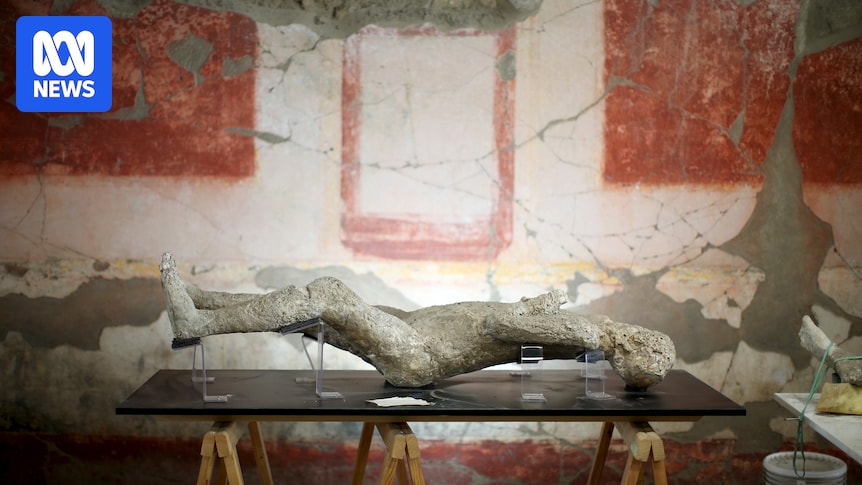DNA testing of some inhabitants of the buried city of Pompeii has found popular narratives around their identities and relationships are largely wrong, a study finds.
The eruption of Mount Vesuvius in 79 AD buried the ancient Roman town in ash, leaving behind an entire archaeological site almost perfectly preserved before its rediscovery in 1748.
Published in the scientific journal Current Biology, the study was led by researchers at the University of Florence in Italy and Harvard University in the United States, and is part of a wider project to map the DNA of over 1,000 human remains uncovered at the site.
Pompeii’s status as a port city influenced a wide range of eastern Mediterranean, Levantine and North African DNA samples found, representing a wider range of ethnicities than originally assumed, the authors said.
A 2015 restoration of some plaster casts of remains found many had been significantly altered by the first archaeologists and restorers who found them, meaning interpretations based on the final pose or shape of the victims’ bodies were impacted, as well as assumptions around proximity and gender roles.
Plaster cast moulds of the victims uncovered in Pompeii held valuable DNA for scientists to test. (Reuters: Alessandro Bianchi)
“This study illustrates how unreliable narratives based on limited evidence can be, often reflecting the worldview of the researchers at the time,” the authors wrote.
The study’s authors took samples from individual bone fragments mixed with plaster from 14 casts and analysed the nuclear and mitochondrial DNA left behind after thousands of years preserved in ash.
Jewellery’s associations found to be false
A group found in 1974 in the House of the Golden Bracelet, named for the piece of jewellery found on the arm of one resident, was previously assumed to be a family group that included a mother, based on the bracelet and child in close proximity.
However, the researchers concluded the four individuals were unrelated and all were male, with “considerable variation” in their genetic diversity.
One of the people found had black hair and dark skin, which alongside genetic markers indicated eastern Mediterranean or North African ancestry.
“These discoveries challenge longstanding interpretations, such as associating jewellery with femininity or interpreting physical closeness as an indicator of biological relationships,” the authors wrote.
“Instead of establishing new narratives that might also misrepresent these people’s lived experiences, these results encourage reflection on conceptions and construction of gender and family in past societies as well as in academic discourse.”
The volcanic eruption buried Pompeii’s buildings, homes and residents in ash, preserving them for thousands of years. (Reuters: Ciro De Luca)
Two individuals found close together in the House of the Cryptoporticus had been hypothesised to be sisters, a mother and daughter, or lovers embracing.
Nuclear genetic testing showed one of the pair was a young adult male, meaning the first two theories were excluded, and the pair were not related through the maternal line.
The young man’s ancestry was also Mediterranean, and consistent with modern-day Turkish populations, the study showed.
The researchers were unable to determine the sex of the second individual, though CT skeletal scans suggested they were aged in their mid to late teens.
